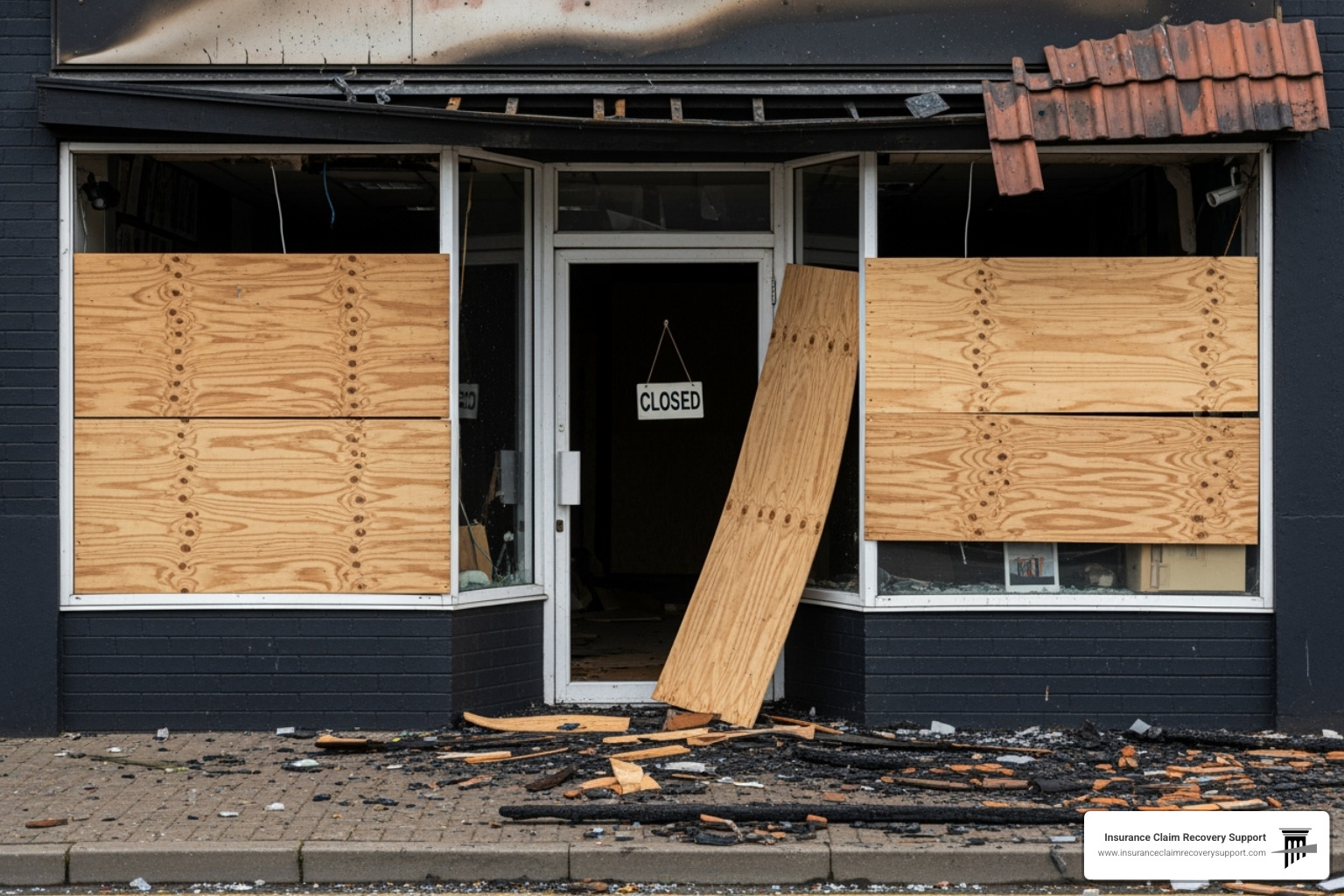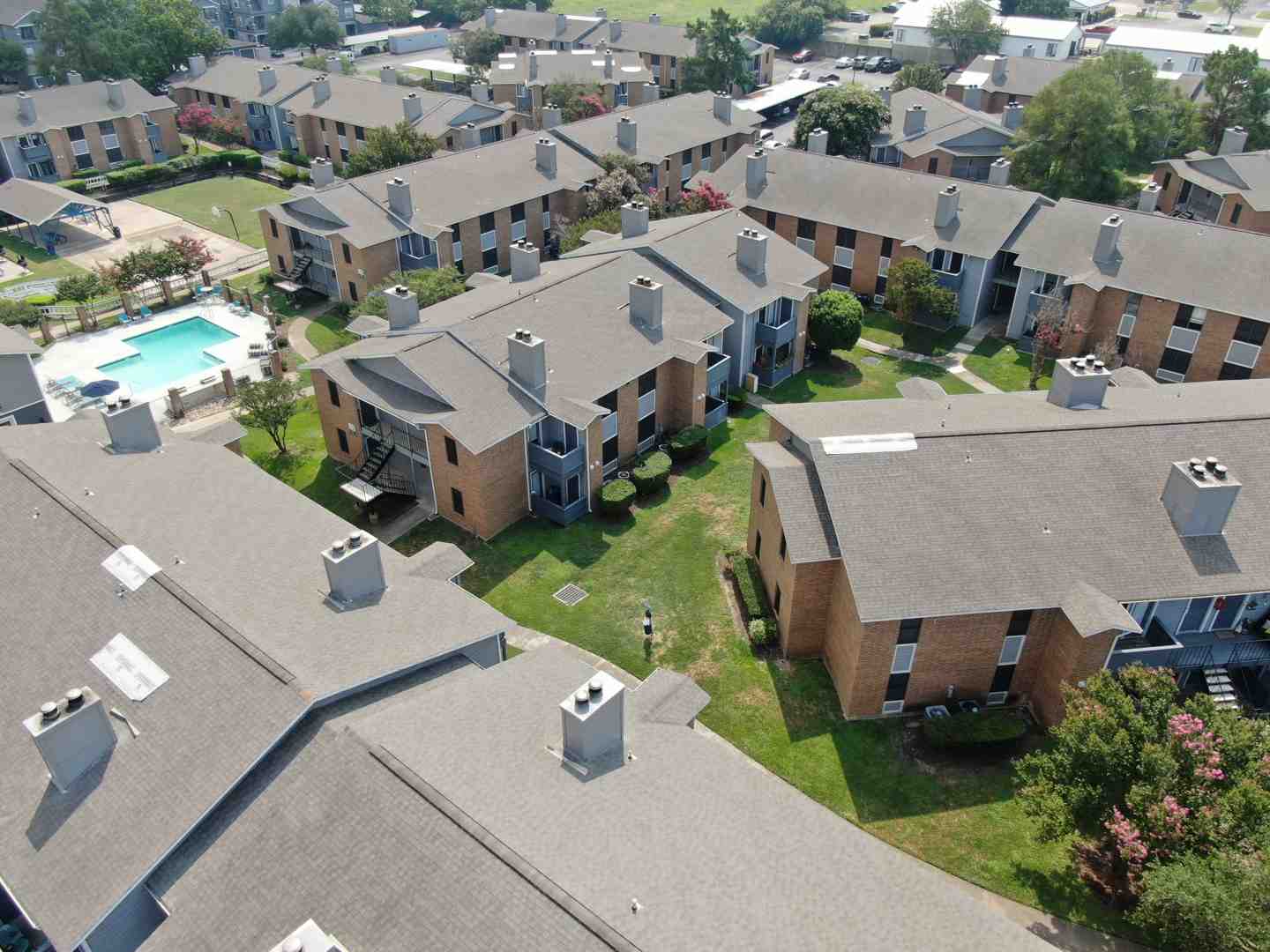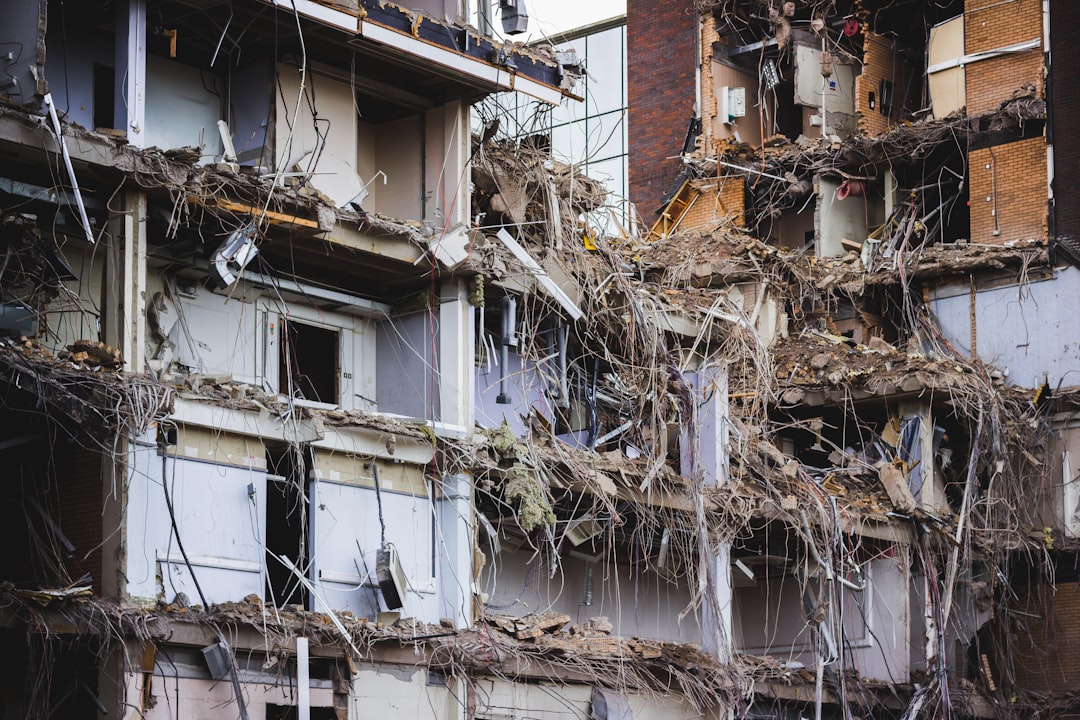Roof hail damage can be a costly ordeal for property owners. When a hailstorm strikes, it can wreak havoc on your roof, causing anything from minor dings to severe structural damage. Understanding what roof hail damage looks like is crucial for addressing repairs swiftly and effectively:
- Visible dents in shingles: These can appear as small, round depressions.
- Loss of granules: This leaves behind dark patches where the asphalt is exposed.
- Cracked or split shingles: Often from the impact, leading to potential leaks.
- Metal roof damage: Look for dents and dings on metal surfaces and gutters.
Hailstorms are among the most common weather-related causes of property damage, especially in hail-prone regions like Texas, Colorado, and Nebraska. Knowing how to recognize the signs of damage can help you take quick action, potentially filing an insurance claim to aid in repair costs. Most standard homeowners insurance policies cover such damage if reported promptly, but understanding the specifics of your coverage is vital to avoid surprises.
I’m Scott Friedson, a multi-state licensed public adjuster with over $250 million in large loss insurance claim recovery experience. My expertise in roof hail damage ensures you can steer these challenges and maximize your claim successfully. Let’s explore next how to fully understand and identify the impact of hail on your roofing.

Key terms for roof hail damage:
– hail damage insurance claim process
– hail and wind damage insurance claims
– roof storm damage insurance
Understanding Roof Hail Damage
Hailstorms can cause significant damage to your roof, but not all hail impacts are the same. The extent of roof hail damage depends on several factors, including hail size, wind speed, and the type of roofing materials. Let’s break down these elements to help you recognize the signs of hail damage and understand how different materials react.
Signs of Roof Hail Damage
-
Granule Loss: One of the first signs of hail damage on asphalt shingles is the loss of granules. These tiny particles protect your roof from UV rays and weather elements. When hail knocks them off, it leaves dark patches where the asphalt is exposed, making your roof vulnerable to further damage.
-
Cracked Shingles: Hail impact can cause shingles to crack. This is especially common with larger hailstones or when the shingles are already brittle from age. Cracks can lead to leaks, which can cause water damage inside your home.
-
Exposed Fiberglass: When hail hits hard, it can break through the shingle layers, exposing the fiberglass mat underneath. This is a serious issue, as it compromises the integrity of your roof.
Impact on Different Roofing Materials
Different roofing materials react differently to hail impacts. Here’s what to look for:
-
Asphalt Shingles: These are the most common and are particularly vulnerable to hail. Look for granule loss, black hail hits, and cracks. The damage is often random, with no discernible pattern.
-
Wood Shingles: Hail can cause wood shingles to split, especially if they are older. Look for splits with sharp edges and corners, and check for any impact marks or dents along the splits.
-
Clay Tiles: Although more resistant to hail than asphalt or wood, clay tiles can still suffer damage. Hail can crack these tiles, especially if they are older or already weakened.

Wind Speed and Hail Size
The severity of hail damage also depends on the size of the hailstones and the speed of the wind during the storm. Larger hailstones, especially those larger than a golf ball, can cause severe damage. High winds can drive hailstones with greater force, increasing the potential for damage.
By understanding these factors and recognizing the signs of roof hail damage, you can take timely action to repair your roof and protect your home. Next, we’ll discuss how to identify hail damage through professional inspection and how it relates to your insurance coverage.
How to Identify Roof Hail Damage
Professional Roof Inspection
Identifying roof hail damage isn’t always straightforward. It often requires a trained eye to spot the subtle signs that hail has compromised your roof’s integrity. Here’s how you can spot potential damage and why a professional inspection is essential.
Inspection Tips
Start with a basic visual inspection from the ground. Use binoculars to look for missing or cracked shingles and dark patches indicating granule loss. These are common signs of hail damage, especially on asphalt shingles.
Gutters and Downspouts: Check these areas for dents or granule buildup. Hail can knock granules loose, which often wash into gutters and downspouts. This granule loss is a clear indicator that your shingles have been damaged.
Siding and Decks: Look for dents or chips in your siding and patio decks. Hail can leave visible marks on these surfaces, suggesting that your roof might have suffered similar impacts.
Why Hire a Professional?
While a DIY inspection can reveal obvious issues, a professional roof inspection provides a comprehensive assessment. Trained roofing experts can detect less obvious signs of damage that untrained eyes might miss.
Professionals will:
-
Check for Hidden Damage: Some hail damage isn’t immediately visible. Professionals know where to look and what to look for, such as bruised shingles that feel soft to the touch.
-
Assess Structural Integrity: Beyond visible damage, hail can affect the underlying structure of your roof. An expert can determine if there’s any sagging or damage to the trusses or rafters.
-
Provide a Detailed Report: A professional inspection includes a thorough report of the damage, which is crucial for insurance claims. This report will detail the extent of the damage and recommend necessary repairs or replacements.
-
Use Advanced Tools: Professionals use specialized tools and techniques to assess damage accurately. This ensures that no hidden damage is overlooked, protecting your home from future leaks and structural issues.

By understanding these inspection tips and the importance of a professional assessment, you can better protect your home from the aftermath of a hailstorm. Up next, we’ll explore the connection between roof hail damage and insurance claims, including how to steer the claim process effectively.
Roof Hail Damage and Insurance
When hailstorms hit, understanding how to steer the insurance process is crucial. Homeowners insurance typically covers roof hail damage, but the claim process can be tricky. Here’s a step-by-step guide to help you through it.
Filing an Insurance Claim
1. Understand Your Policy
Before filing a claim, review your homeowners insurance policy. Policies vary widely, so it’s important to know what yours covers. Look for specific details about hail damage, deductibles, and whether you have Actual Cash Value (ACV) or Replacement Cost Value (RCV) coverage. ACV covers the depreciated value of your roof, while RCV covers the cost to replace it.
2. Document the Damage
Thorough documentation is key to a successful claim. Take clear photos and videos of the damage from multiple angles. Include close-ups of any granule loss, cracked shingles, or dents. This evidence supports your claim and helps the adjuster understand the extent of the damage.
3. Contact Your Insurance Company
Report the damage to your insurance company as soon as possible. This starts the claim process. Be prepared to provide them with the documentation you’ve collected.
4. Schedule an Adjuster Assessment
An insurance adjuster will assess the damage to determine the payout. They will inspect your roof, review your documentation, and evaluate the repair or replacement costs. It’s beneficial to have a professional roofing contractor present during this assessment to ensure nothing is missed.
5. Know the Claim Timeline
Most insurance companies require claims to be filed within a year from the date of the hailstorm. However, timelines can vary, so check your policy for specific deadlines. Filing promptly ensures you stay within the allowed window.
6. Review and Finalize the Settlement
Once the adjuster completes their assessment, the insurance company will offer a settlement. Review the offer carefully. If it’s lower than expected, you can negotiate or provide additional documentation to support your case.
Navigating a hail damage claim can be a complex process, but understanding these steps can make it smoother. Next, we’ll address some frequently asked questions about roof hail damage to further clarify the process.
Frequently Asked Questions about Roof Hail Damage
How big does hail have to be to damage your roof?
The size of hailstones is a major factor in determining potential damage. Hailstones as small as 1 inch in diameter can cause significant damage to your roof, especially if accompanied by strong winds. Larger hailstones, such as those measuring 1.75 inches or more, can cause severe damage, including bruising and cracking of shingles.
Wind conditions play a crucial role too. Strong winds can drive hailstones with more force, increasing the likelihood of damage. It’s not just the size but also the speed and angle at which hailstones hit your roof that matters.
How to spot fake hail damage on a roof?
It’s important to differentiate between genuine hail damage and other types of roof wear. Fake hail damage may be suggested by unscrupulous contractors looking to profit from unnecessary repairs. Look out for:
- Pockmarks: Genuine hail damage often leaves irregular, round dents. Be wary of uniform or suspiciously spaced marks.
- Bruising: Press gently on the shingle. If it feels soft or spongy, it might be bruised from hail impact. Bruising is less likely to be faked.
- Granule Crushing: Check for excessive granule loss. Hail can crush granules, exposing the underlying fiberglass. However, granule loss due to aging might be misrepresented as hail damage.
Always consult a trusted roofing professional for an accurate assessment.
How much damage does a roof need to be replaced?
Determining whether to repair or replace a roof depends on the damage extent. Insurance adjusters often use test squares—10-foot by 10-foot sections—to assess damage. If a certain percentage of these areas show damage, a replacement might be justified.
Factors include:
- Damage Percentage: If a significant portion of shingles are damaged, replacement is more cost-effective than repair.
- Repair vs. Replacement: Minor damage might only require repairs, such as replacing a few shingles. However, widespread damage, especially affecting the roof’s structural integrity, often necessitates a full replacement.
Understanding these criteria helps in making informed decisions about roof repairs or replacements.
Next, we’ll explore proactive measures and support options available in Texas to protect your roof from future hail damage.
Conclusion
Navigating roof hail damage can be daunting, but proactive steps and the right support can make a world of difference. At Insurance Claim Recovery Support, we specialize in advocating for policyholders, ensuring you receive the maximum settlement you deserve for hail damage and other property claims. Our expertise lies in representing you, the homeowner, and securing the best possible outcome for your insurance claims.
Proactive Measures
Taking proactive measures can protect your roof from future hail damage and potentially save you from costly repairs. Here are some steps you can take:
- Install Hail-Resistant Roofing: Consider upgrading to materials rated UL 2218 Class 4, which offer the highest resistance to hail.
- Regular Maintenance: Keep your roof in good condition by scheduling regular inspections and addressing minor issues before they escalate.
- Document Everything: Maintain a record of inspections and repairs. This documentation can be invaluable during the insurance claim process.
Texas Locations We Serve
We proudly serve homeowners across Texas, including major cities like Austin, Dallas, Fort Worth, San Antonio, Houston, Lubbock, San Angelo, Waco, Round Rock, Georgetown, and Lakeway. Our local expertise ensures that we understand the unique challenges each area faces, from frequent hailstorms to other severe weather events.
If you’re dealing with hail damage or just want to be prepared, reach out to us for guidance and support. We’re here to help you protect your home and steer the complexities of insurance claims. For more information on how we can assist you, visit our Property Damage Claims in Texas page.
By staying informed and taking proactive steps, you can safeguard your property and ensure a smoother recovery process after hailstorms. We’re here to stand by you every step of the way.






